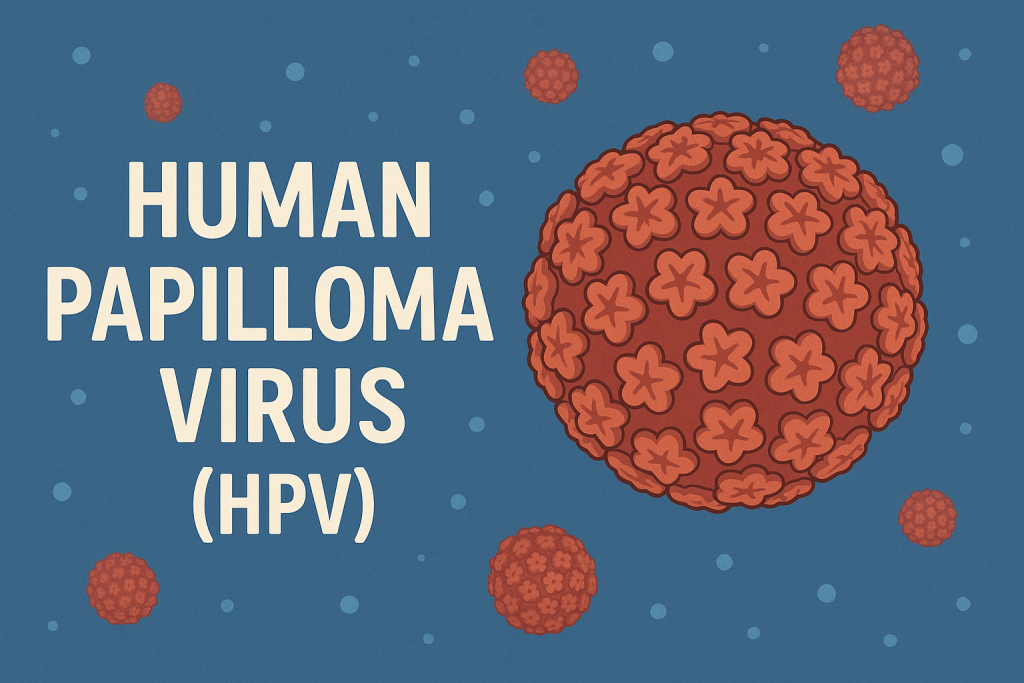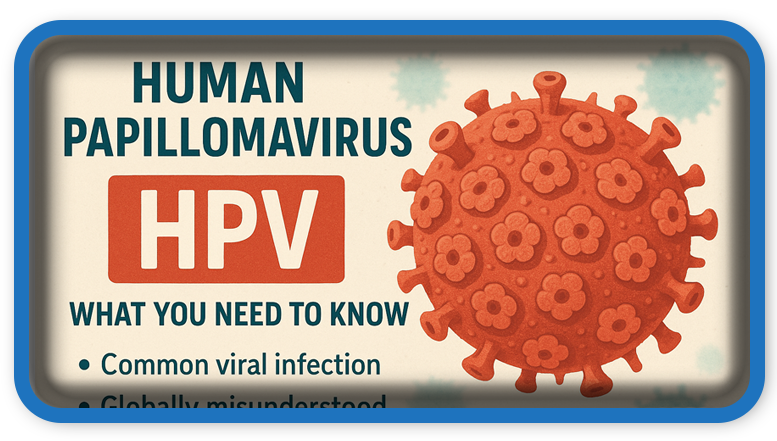⏲️ Estimated reading time: 4 min
Human Papillomavirus (HPV) is among the most common viral infections globally, often misunderstood yet crucial to know. This guide explains HPV types, transmission, symptoms, health risks, prevention, and treatments to help protect your health.
What is HPV?
Human Papillomavirus (HPV) refers to a group of over 200 related viruses. These are divided into low-risk and high-risk types based on their potential health impact. Low-risk types may cause warts, while high-risk strains are linked to various cancers. HPV mainly spreads through skin-to-skin contact, most commonly during sexual activity, though non-sexual transmission can occur rarely.
According to the Centers for Disease Control and Prevention (CDC), almost all sexually active individuals will contract at least one type of HPV in their lifetime. Often asymptomatic, HPV may go undetected unless specific screening is performed.
How Does Human Papillomavirus (HPV) Spread?
HPV transmission primarily occurs through direct skin contact during vaginal, anal, or oral sex. However, non-penetrative acts, like intimate touching, can also spread the virus. In rare cases, objects like towels or razors may be vectors, and mothers can transmit HPV to infants during childbirth, causing respiratory papillomatosis.
HPV often spreads unknowingly, even when no symptoms are present, making awareness and prevention essential.
Types of HPV and Their Effects
HPV includes:
- Low-risk types (e.g., HPV 6 and 11): Cause benign conditions like genital and common warts.
- High-risk types (e.g., HPV 16 and 18): Linked to cervical, anal, penile, vaginal, vulvar, and throat cancers.
Most infections (about 90%) resolve within two years without intervention. Persistent high-risk HPV, however, may cause cellular changes leading to cancer.
Symptoms of HPV
HPV often shows no early symptoms. When present, they vary:
- Genital warts: Small bumps in the genital or anal area.
- Common warts: Raised growths on hands or fingers.
- Plantar warts: Painful, grainy growths on feet.
- Cancer-related: Symptoms like abnormal bleeding or pelvic pain may arise only in advanced stages.
Routine screenings are crucial for early detection, especially in women.

Health Risks Associated with HPV
While most infections are harmless, persistent high-risk HPV can cause:
- Cervical cancer: Nearly all cases globally are HPV-related.
- Anal cancer: Higher in immunocompromised individuals.
- Oropharyngeal cancer: Increasingly common, particularly among men.
- Penile, vaginal, and vulvar cancers: Less frequent but serious.
Besides physical effects, visible warts and cancer diagnoses can lead to psychological stress.
Prevention of Human Papillomavirus (HPV)
Key strategies include:
1. HPV Vaccination
Vaccines like Gardasil and Cervarix offer protection against common HPV strains. Recommended from age 11 or 12, they are effective up to age 45. Ideally, the vaccine is administered before sexual debut.
2. Safe Sexual Practices
Condoms and dental dams reduce transmission risk. Limiting sexual partners and maintaining open communication about STIs are also helpful.
3. Regular Screenings
Women should begin Pap smears by age 21. Screenings every 3-5 years help detect precancerous changes. High-risk individuals should also consider oral and anal cancer screenings.
Treatment Options for Human Papillomavirus (HPV)
There is no cure for HPV itself, but treatments exist for its effects:
- Genital warts: Treated with topical medications, cryotherapy, or surgery.
- Precancerous lesions: Managed via monitoring or procedures like LEEP or cryotherapy.
- Cancer: Requires individualized treatment plans including surgery, radiation, or chemotherapy.
Many minor HPV issues resolve naturally, with monitoring being a common medical approach.
Living with Human Papillomavirus (HPV)
Receiving an Papillomavirus (HPV) diagnosis can be daunting, but most cases are manageable. Support from healthcare providers and mental health resources can ease emotional burdens. Proactive health practices can make a significant difference.
HPV is widespread but manageable with proper awareness. Understanding its transmission, effects, and preventive strategies can empower individuals to make informed health decisions. Vaccination, safe practices, and screenings are key to minimizing HPV-related complications.
📩 Do you have questions or suggestions? Leave a comment or contact us!
🏷️ Tags: HPV, Human Papillomavirus, HPV symptoms, HPV prevention, HPV vaccine, genital warts, cervical cancer, HPV screening, sexual health, STI awareness
📢 Hashtags: #HPV #HPVAwareness #SexualHealth #CervicalCancer #HPVVaccine #STIAwareness #HPVSymptoms #HPVTreatment #WomensHealth #PublicHealth
Only logged-in users can submit reports.
Discover more from HelpZone
Subscribe to get the latest posts sent to your email.

